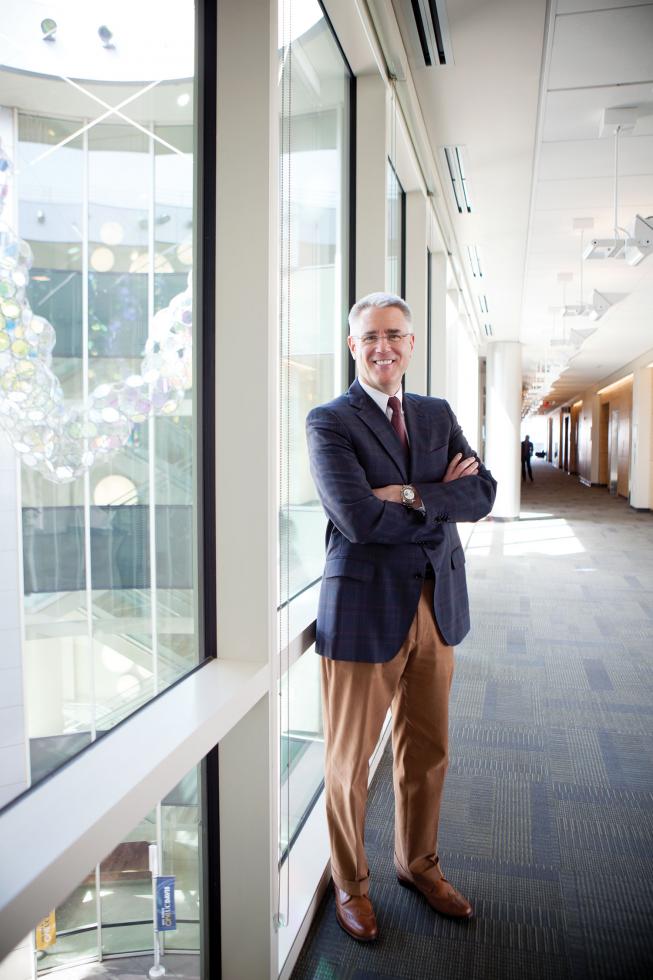Steven Currall is the Chancellor’s Senior Advisor for Strategic Projects and Initiatives and a management professor at UC Davis, where he is leading campus-wide deliberations about the vision for the university’s long-term future. A psychological scientist, Currall has conducted research and taught for over 25 years on organizational topics such as innovation, emerging technologies, negotiation and corporate governance. He was also the dean of the UC Davis Graduate School of Management for five years.
UC Davis will this month release its plan for its University of the 21st Century initiative. What is that initiative, and what does it involve?
In 2014, UC Davis Chancellor Linda Katehi launched an ambitious strategic visioning process to position UC Davis as the university of the 21st Century. This involves seeking input from all faculty, staff, students, alumni and friends of the university to discover their dreams and aspirations for what UC Davis can become in the next 40 or 50 years. We are imagining, for example, how the university can contribute to solving grand global challenges such as food, health, sustainability and energy. We are also imagining what type of educational experience the daughters and sons of our current students will need to succeed in the years to come, while it is impossible at the moment to forecast what jobs will be in 50 years. Also, we are reflecting on how best to integrate our physical locations in the Sacramento area to even more effectively deliver on our mission of research, teaching and public service. Preliminary draft recommendations will be issued by the University of the 21st Century Committee by July 1st.
What are the financial realities facing the university?
We continue to be under a lot of pressure from the state’s divestment in higher ed. We don’t anticipate that changing anytime soon. As we think about a possible greater presence in the Sacramento region, we are expecting that there might be new sources of funds, philanthropic or otherwise, that would help us achieve that presence without diverting existing university resources away from our current obligations. We have a plan called the 2020 Initiative through which we intend to add 5,000 more undergraduates by 2020. We are committed to access — there are so many kids who want to attend a University of California campus — and it helps us address funding challenges as well. We have excess capacity — classrooms and housing — and we can include those additional students and harvest the efficiencies. It should be additional revenue with little or no additional expenditures. The model will be 80 percent coming from outside the state, which assists us with respect to revenue. Traditionally we have been around 8 to 12 percent (total) nonresident students. For comparison, UC Berkeley and UCLA are closer to 20 percent.
How else has the student body changed over the past few years, and how will it continue to change?
It’s becoming increasingly difficult to get admitted to UC Davis. We had nearly 80,000 applications last year for our undergraduate programs, and we took in somewhere between 5,000 and 6,000. We are very proud of the diversity of the student body, and we continue to seek additional African American and Hispanic students. Asians are above 40 percent, but we feel good about that. We aspire to be a Hispanic-serving institution, which I think requires us to be at about 25 percent, and we are approaching that. The other thing that’s interesting about demographics is that more than 40 percent of our students are Pell-eligible. It’s a federal grant program for young people from homes with modest socioeconomic resources. As a comparison, Washington University in St. Louis, which is private, is at around 9 percent. The Ivy Leagues are somewhere between 10 and 13 percent. Relative to those universities, we’re light years ahead. We also have a large percentage of students who are the first in their families to go to college.
What will we see as far as technology commercialization in the next five years?
I think we’ll see an increasing number of startup companies. There were 14 startups founded last year on UC Davis intellectual property. I think that trend is going to continue. I think there is going to be growing early-stage investment into UC Davis technologies, and we’re already seeing that trend emerging. For example, there was recently an article in the Wall Street Journal about how agriculture is becoming a new active area of investment by venture capitalists and angel investors. We’re eager to contribute to that effort, and we think we’ve got a lot to offer. We can be a hub of job creation, startup formation, venture capital, all of those things, and under the theme of making us the Silicon Valley of food and health.
When you see VC coming to support UC Davis-based ideas and technologies, is any of it from local firms?
My sense is that many of the local venture funds have been focused on traditional high-tech sectors, information technology, software and so on. And that makes sense; we have some strengths in that area; we have a big presence from Intel and HP. But to me what’s exciting is that firms are getting excited about the areas in which UC Davis truly has a global competitive advantage — sustainable, renewable energy and ag — and where we can successfully compete against Berkeley and Stanford and others. I think we’re on the cusp. We’re entering a new era.



